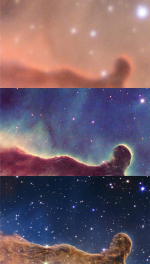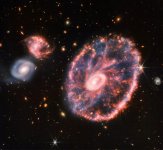You are using an out of date browser. It may not display this or other websites correctly.
You should upgrade or use an alternative browser.
You should upgrade or use an alternative browser.
James Webb Space Telescope (JWST)
- Thread starter biometrics
- Start date
It is really so incredible. I feel very smallView attachment 33549
A comparison from the La Silla Observatory image, with Hubble below, and the JWST image at the bottom.
biometrics
Well-Known Member
- Joined
- Oct 17, 2019
- Messages
- 20,332
It's such moments that you realise yolo.It is really so incredible. I feel very small
And that we don't matter. There is so much more out there. The mind bogglesIt's such moments that you realise yolo.
biometrics
Well-Known Member
- Joined
- Oct 17, 2019
- Messages
- 20,332
Did you know that our sun has 99% of the mass in our solar system. We are but specks of dust.And that we don't matter. There is so much more out there. The mind boggles
biometrics
Well-Known Member
- Joined
- Oct 17, 2019
- Messages
- 20,332
biometrics
Well-Known Member
- Joined
- Oct 17, 2019
- Messages
- 20,332
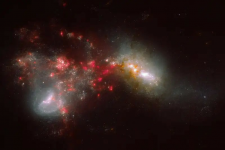

JWST has caught two galaxies smashing together and sparking starbursts
Two glittering galaxies 275 million light years away smash together and spur star formation in an amazing new image from the James Webb Space Telescope
Seldom Bucket
Well-Known Member
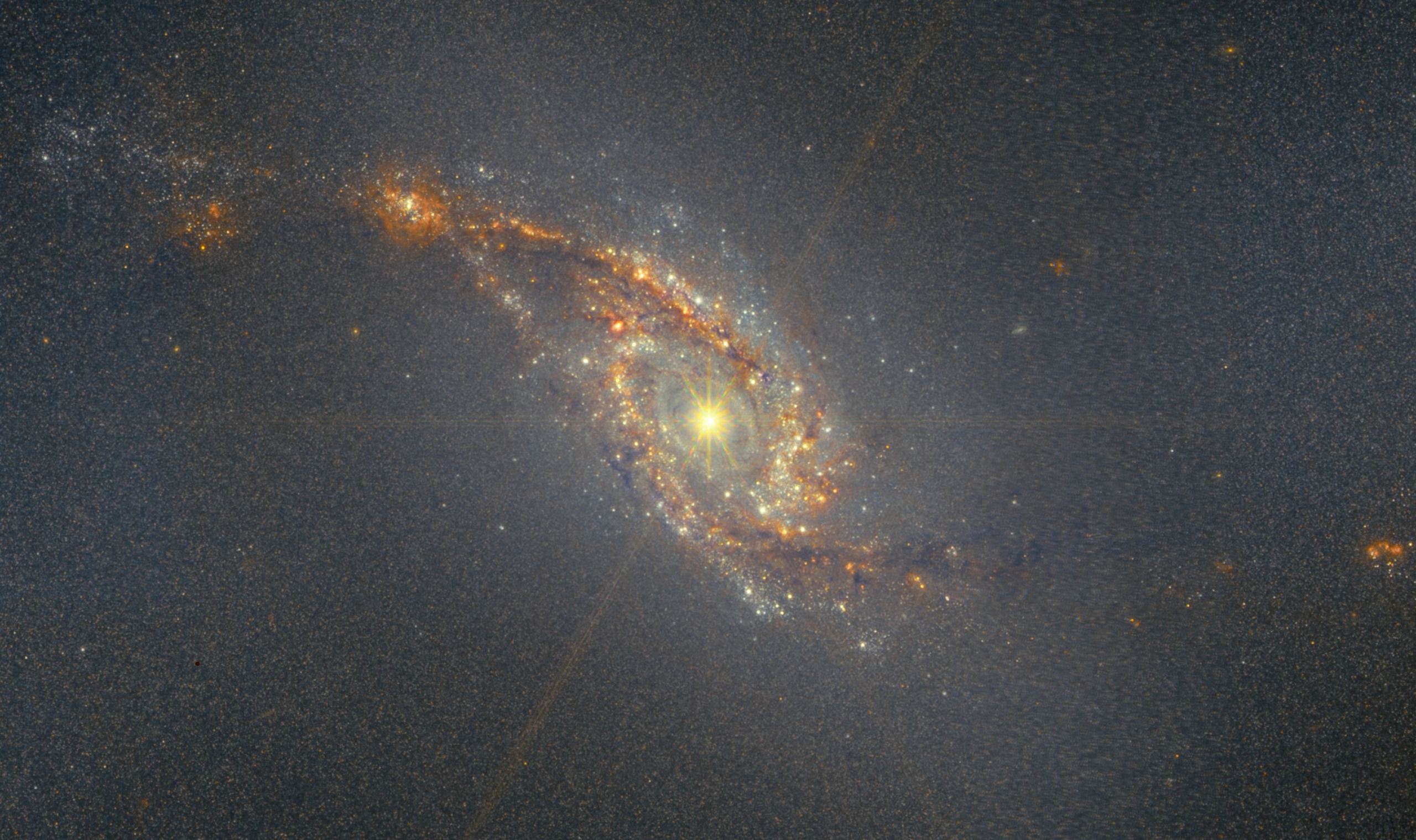
Gaze Into the Heart of NGC 1365, Captured by Webb
Astrophotographer Judy Schmidt (aka. Geckzilla, SpaceGeck) is at it again! Earlier this month, she released a processed image of the Great Barred Spiral Galaxy (NGC 1365). The James Webb Space Telescope (JWST) recently observed this iconic double-barred spiral galaxy, which resulted in the...
 www.universetoday.com
www.universetoday.com
Seldom Bucket
Well-Known Member
The Latest Webb Observations Don’t Disprove The Big Bang, But They Are Interesting
Okay, so let’s start with the obvious. The big bang is not dead. Recent observations by the James Webb Space Telescope have not disproven the big bang, despite certain popular articles claiming otherwise. If that’s all you needed to hear, then have a great day. That said, the latest Webb observations do reveal some strange and unexpected things about the universe, and if you’d like to know more, keep reading.
Let’s start with the rumors. What about the new Webb data would suggest the big bang is wrong? The same type of data Hubble gave us years ago. We generally think of evidence for the big bang being centered around two facts: first, that more distant galaxies have a higher redshift than closer ones, and second, that the universe is filled with a cosmic background of microwave radiation. The first suggests that the universe is expanding in all directions, while the second suggests that it was once in a very hot and dense state. These are two of the Three Pillars of data supporting the big bang, the third being the relative abundance of elements in the early universe.

The Latest Webb Observations Don't Disprove The Big Bang, But They Are Interesting
New observations from the JWST don't disprove the big bang any more than Hubble did.
 www.universetoday.com
www.universetoday.com
Seldom Bucket
Well-Known Member
Webb Telescope Sees Jupiter and Its Auroras in a New Light
NASA’s James Webb Space Telescope is designed to probe the farthest frontiers of the universe, but newly released images of Jupiter prove that the observatory can also bring fresh perspectives to more familiar celestial sights.
The infrared images reveal Jupiter’s polar auroras and its faint rings as well as two of its moons — plus some galaxies in the far background. The planet’s Great Red Spot is there as well, but because it’s seen through three of JWST’s specialized filters, it looks white rather than red.
JWST’s new perspective should give scientists a better sense of how the complex Jupiter system is put together.
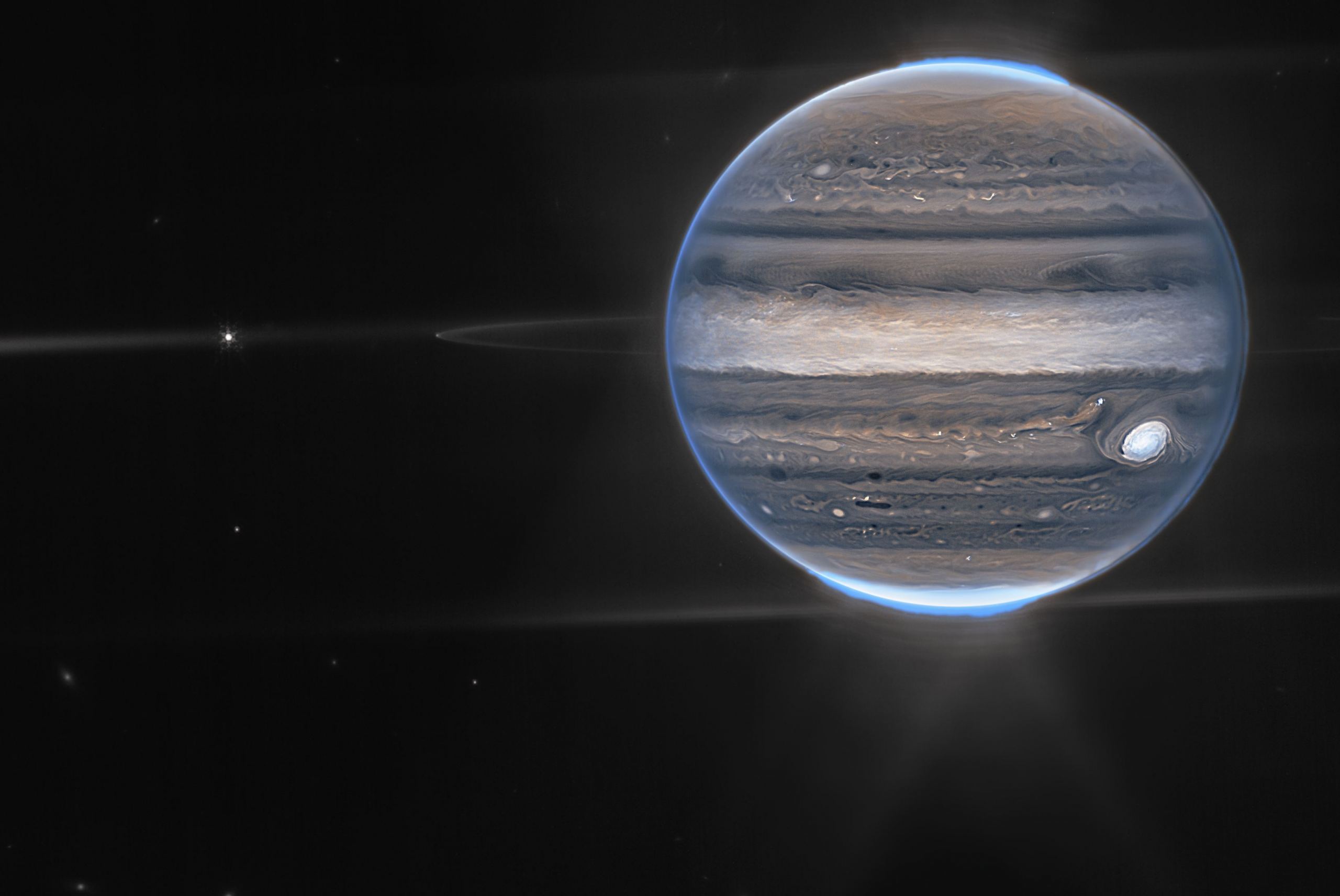
Webb Telescope Sees Jupiter and Its Auroras in a New Light
Newly released images of Jupiter prove that NASA's James Webb Space Telescope can bring fresh perspectives to familiar celestial sights.
 www.universetoday.com
www.universetoday.com
Seldom Bucket
Well-Known Member
biometrics
Well-Known Member
- Joined
- Oct 17, 2019
- Messages
- 20,332
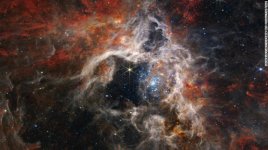

A giant space tarantula has been caught by NASA's Webb telescope
NASA's James Webb Space Telescope has revealed more details about star formation in 30 Doradus, also known as the Tarantula Nebula.
biometrics
Well-Known Member
- Joined
- Oct 17, 2019
- Messages
- 20,332
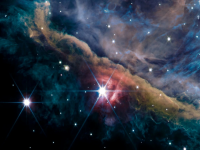

New photos show the Orion Nebula, a star nursery 1,350 light-years from Earth, in great detail | Businessinsider
The Orion Nebula shares a similar environment to that in which our solar system was formed over 4.5 billion years ago.
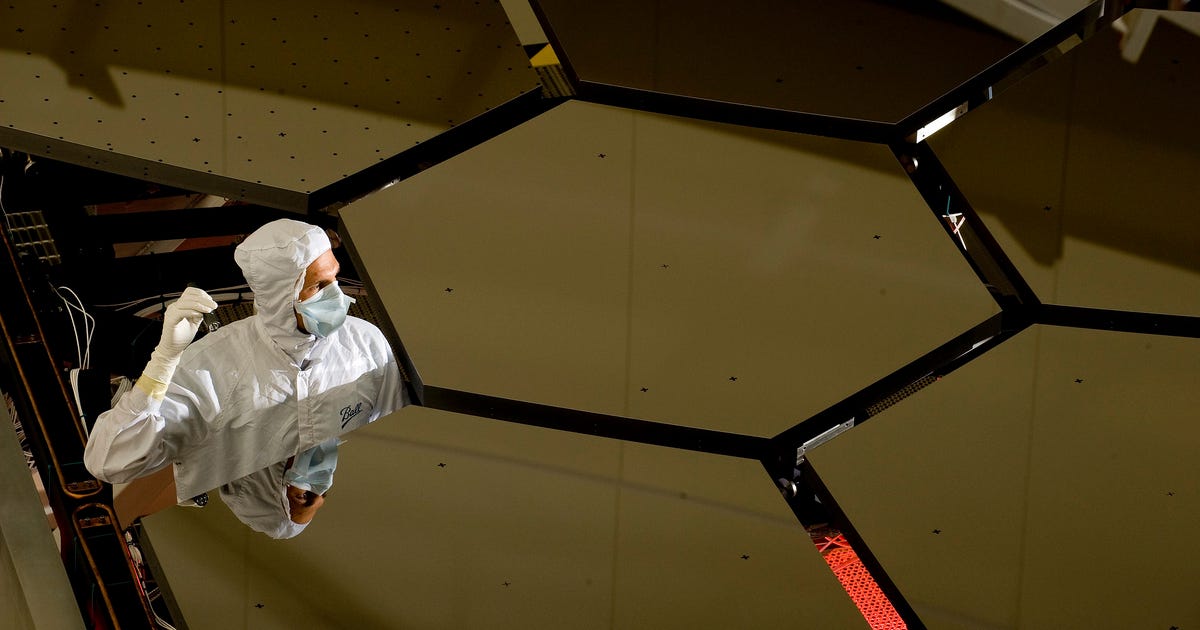
NASA Webb Space Telescope Data Could Be Misinterpreted, Scientists Warn
This telescope is producing impeccable results, but do our models match its excellence?
biometrics
Well-Known Member
- Joined
- Oct 17, 2019
- Messages
- 20,332
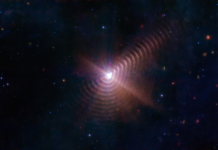
Shells of cosmic dust created by the interaction of binary stars appear like tree rings around Wolf-Rayet 140. The remarkable regularity of the shells’ spacing indicates that they form like clockwork during the stars’ eight-year orbit cycle, when the two members of the binary make their closest approach to one another. In this image, blue, green, and red were assigned to Webb’s Mid-Infrared Instrument (MIRI) data at 7.7, 15, and 21 microns (F770W, F1500W, and F2100W filters, respectively). Credit: NASA, ESA, CSA, STScI, JPL-Caltech.
Source - [NASA](https://blogs.nasa.gov/webb/2022/10/12/webb-reveals-shells-of-dust-surrounding-brilliant-binary-star-system/)
biometrics
Well-Known Member
- Joined
- Oct 17, 2019
- Messages
- 20,332
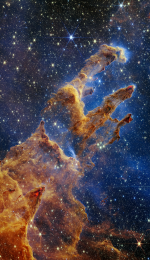

NASA’s Webb Takes Star-Filled Portrait of Pillars of Creation
NASA’s James Webb Space Telescope has captured a lush, highly detailed landscape – the iconic Pillars of Creation – where new stars are forming within dense clouds of gas and dust.
biometrics
Well-Known Member
- Joined
- Oct 17, 2019
- Messages
- 20,332
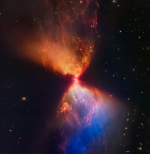

NASA’s Webb Catches Fiery Hourglass as New Star Forms
NASA’s James Webb Space Telescope has revealed the once-hidden features of the protostar within the dark cloud L1527, providing insight into the beginnings of a new star. These blazing clouds within the Taurus star-forming region are only visible in infrared light, making it an ideal target for...

James Webb telescope detects the earliest strand in the 'cosmic web' ever seen
Astronomers using the James Webb Space Telescope have discovered a clump of ancient galaxies that may be the oldest strand of the "cosmic web" ever detected.
biometrics
Well-Known Member
- Joined
- Oct 17, 2019
- Messages
- 20,332
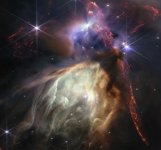
Jets of red gas bursting into the cosmos, and a glowing cave of dust – The National Aeronautics and Space Administration (NASA) unveiled a spectacular new image on Wednesday depicting the birth of stars to mark the first anniversary of the James Webb Space Telescope's science operations.
The picture is of the Rho Ophiuchi cloud complex, the nearest star-forming region to Earth, whose proximity at 390 light years allows for a crisp closeup uncluttered by foreground stars.

NASA celebrates Webb's first year with close-up of stellar birth | News24
NASA unveiled a spectacular new image Wednesday depicting the birth of stars to mark the first anniversary of the James Webb Space Telescope's science operations.
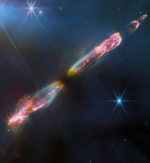
NASA’s Webb Snaps Supersonic Outflow of Young Star !
Herbig-Haro (HH) objects are luminous regions surrounding newborn stars, formed when stellar winds or jets of gas spewing from these newborn stars form shock waves colliding with nearby gas and dust at high speeds. This image of HH 211 from NASA’s James Webb Space Telescope reveals an outflow from a Class 0 protostar, an infantile analog of our Sun when it was no more than a few tens of thousands of years old and with a mass only 8% of the present-day Sun (it will eventually grow into a star like the Sun).
Infrared imaging is powerful in studying newborn stars and their outflows, because such stars are invariably still embedded within the gas from the molecular cloud in which they formed. The infrared emission of the star’s outflows penetrates the obscuring gas and dust, making a Herbig-Haro object like HH 211 ideal for observation with Webb’s sensitive infrared instruments. Molecules excited by the turbulent conditions, including molecular hydrogen, carbon monoxide, and silicon monoxide, emit infrared light that Webb can collect to map out the structure of the outflows.
The image showcases a series of bow shocks to the southeast (lower-left) and northwest (upper-right) as well as the narrow bipolar jet that powers them. Webb reveals this scene in unprecedented detail — roughly 5 to 10 times higher spatial resolution than any previous images of HH 211. The inner jet is seen to “wiggle” with mirror symmetry on either side of the central protostar. This is in agreement with observations on smaller scales and suggests that the protostar may in fact be an unresolved binary star.
Earlier observations of HH 211 with ground-based telescopes revealed giant bow shocks moving away from us (northwest) and moving towards us (southeast) and cavity-like structures in shocked hydrogen and carbon monoxide respectively, as well as a knotty and wiggling bipolar jet in silicon monoxide. Researchers have used Webb’s new observations to determine that the object’s outflow is relatively slow in comparison to more evolved protostars with similar types of outflows.
The team measured the velocities of the innermost outflow structures to be roughly 48-60 miles per second (80 to 100 kilometers per second). However, the difference in velocity between these sections of the outflow and the leading material they’re colliding with — the shockwave — is much smaller. The researchers concluded that outflows from the youngest stars, like that in the center of HH 211, are mostly made up of molecules, because the comparatively low shock wave velocities are not energetic enough to break the molecules apart into simpler atoms and ions.
The James Webb Space Telescope is the world's premier space science observatory. Webb is solving mysteries in our solar system, looking beyond to distant worlds around other stars, and probing the mysterious structures and origins of our universe and our place in it. Webb is an international program led by NASA with its partners, ESA (European Space Agency) and the Canadian Space Agency.
NASA’s James Webb Space Telescope’s high resolution, near-infrared look at Herbig-Haro 211 reveals exquisite detail of the outflow of a young star, an infantile analogue of our Sun. Herbig-Haro objects are formed when stellar winds or jets of gas spewing from newborn stars form shock waves colliding with nearby gas and dust at high speeds. The image showcases a series of bow shocks to the southeast (lower-left) and northwest (upper-right) as well as the narrow bipolar jet that powers them in unprecedented detail. Molecules excited by the turbulent conditions, including molecular hydrogen, carbon monoxide and silicon monoxide, emit infrared light, collected by Webb, that map out the structure of the outflows.
Credits: ESA/Webb, NASA, CSA, T. Ray (Dublin Institute for Advanced Studies)

